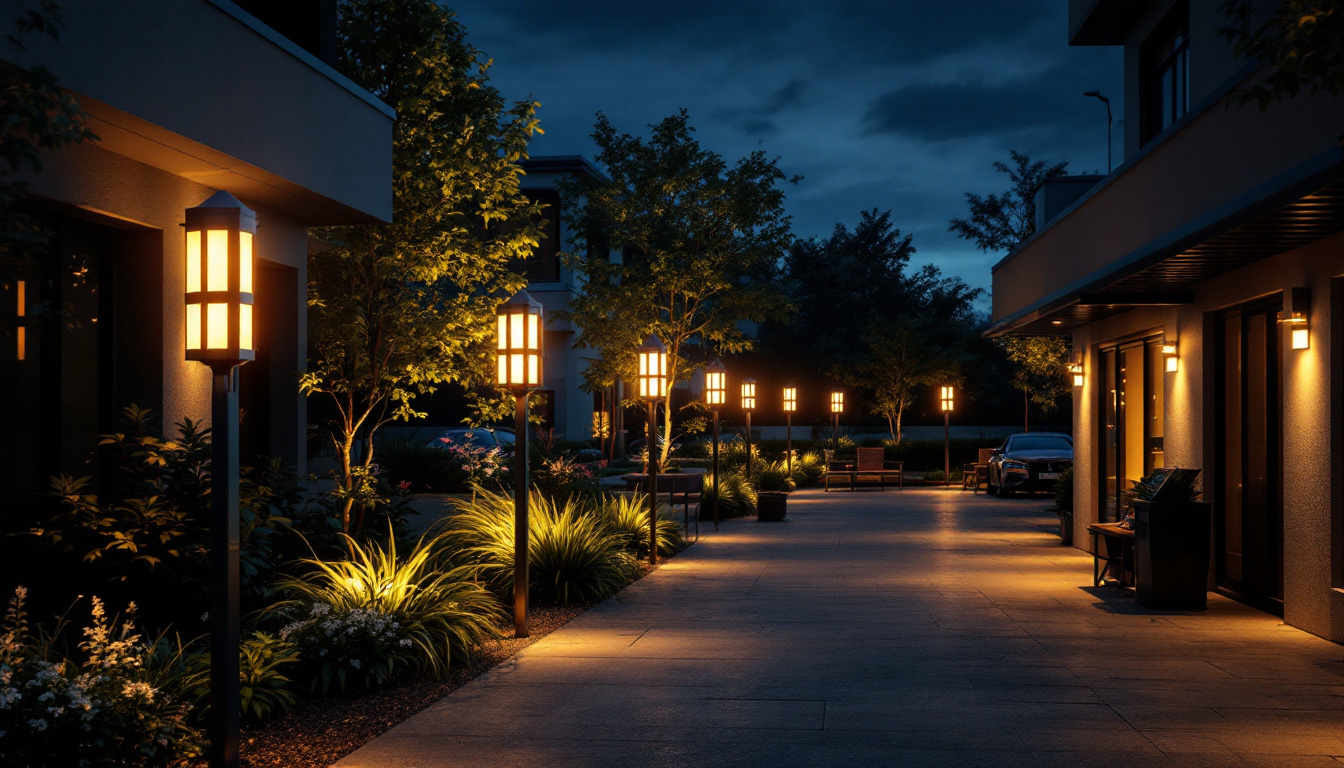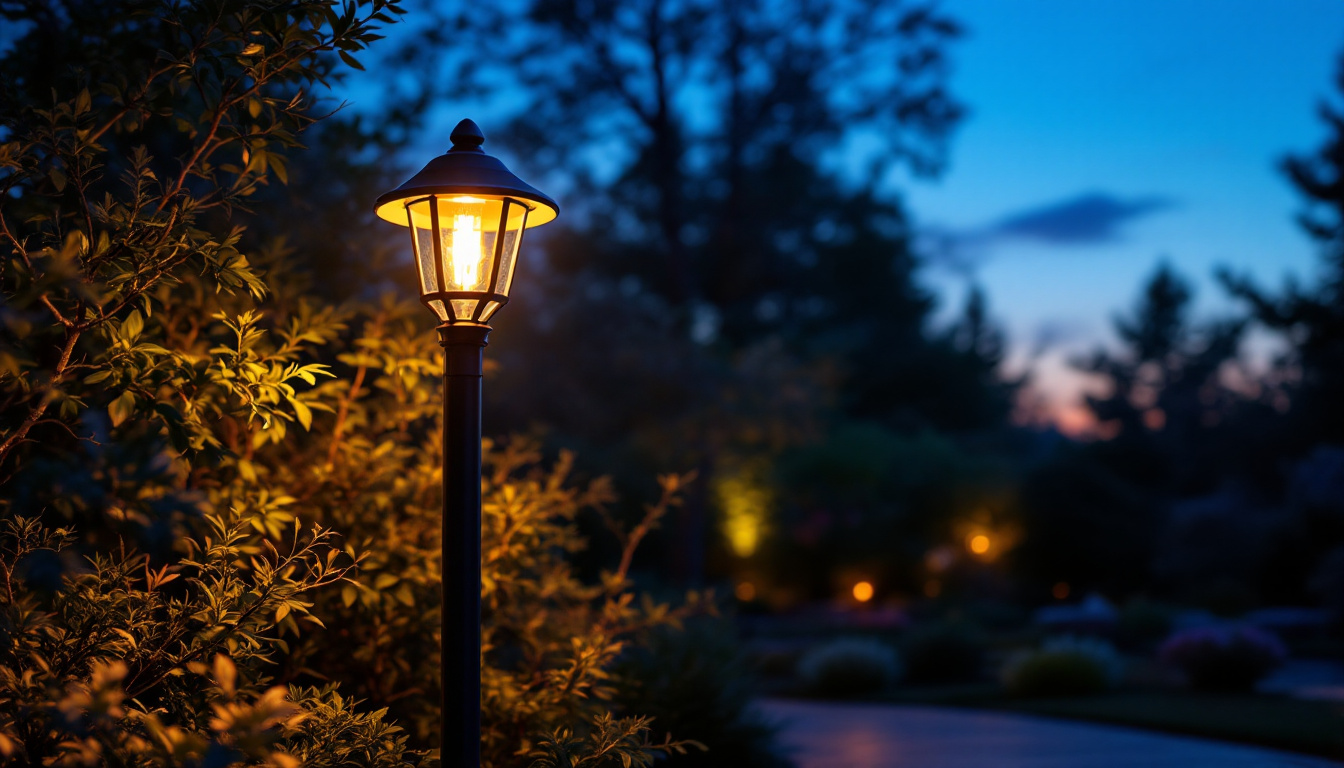
Perimeter lighting plays a crucial role in enhancing security, safety, and aesthetics for residential and commercial properties. As a lighting contractor, understanding the intricacies of perimeter lighting can set you apart in a competitive market. This article delves into essential aspects of perimeter lighting, including its benefits, design considerations, installation techniques, and maintenance practices.
Perimeter lighting refers to the strategic placement of lighting fixtures around the boundaries of a property. This type of lighting serves multiple purposes, including deterring crime, improving visibility, and enhancing the overall appeal of a space. It is commonly used in various settings, from residential homes to commercial complexes and industrial sites.
One of the primary advantages of perimeter lighting is its ability to enhance security. Well-lit areas are less attractive to potential intruders, as they increase the chances of detection. Additionally, perimeter lighting improves safety by illuminating walkways, driveways, and entrances, reducing the risk of accidents during nighttime hours.
Beyond security and safety, perimeter lighting can also elevate the aesthetic appeal of a property. Thoughtfully designed lighting can highlight architectural features, landscaping, and pathways, creating an inviting atmosphere. This not only enhances the property’s curb appeal but can also increase its value. Furthermore, effective perimeter lighting can create a sense of warmth and welcome, making outdoor spaces more usable during the evening hours. Homeowners and businesses alike can benefit from the ability to host gatherings or events outside, extending the functionality of their properties into the night.
There are several types of perimeter lighting options available, each with its unique characteristics and benefits. Common types include:
In addition to these common types, solar-powered lights have gained popularity in recent years. These environmentally friendly options harness sunlight during the day to provide illumination at night, reducing energy costs and minimizing the carbon footprint. Moreover, smart lighting systems have emerged, allowing property owners to control their perimeter lighting remotely via smartphone apps. This technology not only offers convenience but also enhances security by enabling users to turn lights on and off or adjust brightness levels in real-time, even when they are away from the property.
Effective perimeter lighting requires careful planning and design. Several factors must be considered to ensure optimal performance and aesthetics.
Establishing appropriate lighting levels is crucial for both safety and security. The illuminance required will vary depending on the area being lit. For example, parking lots may require higher levels of light compared to residential pathways. Uniformity is also essential; uneven lighting can create dark spots that may compromise safety and security.
To achieve uniform lighting, consider the spacing and height of fixtures. A well-planned layout will ensure that light is distributed evenly across the area, minimizing shadows and dark spots. Additionally, using fixtures with adjustable optics can help fine-tune the spread of light, allowing for greater flexibility in design. This adaptability is particularly beneficial in areas where the surrounding landscape or architecture may impact how light is perceived, ensuring that every corner is adequately illuminated.
With growing concerns about energy consumption and sustainability, energy-efficient lighting solutions are increasingly important. LED fixtures are a popular choice for perimeter lighting due to their long lifespan and low energy consumption. They provide bright illumination while consuming significantly less power compared to traditional incandescent or halogen lights.
Incorporating smart lighting systems can further enhance energy efficiency. These systems can include motion sensors, timers, and dimmers, allowing lights to operate only when needed, thereby reducing energy waste. Moreover, integrating renewable energy sources, such as solar panels, can further decrease reliance on the grid, making perimeter lighting systems more sustainable. The combination of smart technology and renewable energy not only contributes to lower operational costs but also aligns with modern environmental standards, appealing to eco-conscious users and stakeholders.
Proper installation is vital for the effectiveness and longevity of perimeter lighting systems. Lighting contractors should adhere to best practices to ensure a successful installation.
Before installation, conducting a thorough site assessment is essential. This involves evaluating the property’s layout, identifying key areas that require illumination, and considering potential obstacles such as trees or buildings that may obstruct light. Understanding the local environment will help in selecting the right fixtures and determining their optimal placement. Factors such as the surrounding landscape, existing structures, and even the local wildlife can influence the lighting design. For example, if the property is near a wooded area, it may be necessary to choose fixtures that are more durable and resistant to the elements, ensuring they can withstand potential damage from falling branches or harsh weather conditions.
When placing fixtures, it is important to consider both functionality and aesthetics. Fixtures should be positioned to minimize glare while maximizing coverage. For instance, floodlights should be angled to avoid shining directly into windows, which can create discomfort for occupants. Moreover, the color temperature of the lighting can also play a significant role in the overall ambiance of the space. Warm white lights can create a welcoming atmosphere, while cooler tones may provide a more modern and sleek look.
Additionally, the height at which fixtures are mounted can significantly impact their effectiveness. Higher-mounted fixtures can cover larger areas but may require more powerful bulbs to ensure adequate illumination. Conversely, lower-mounted fixtures can provide more focused light but may need to be spaced closer together. It is also crucial to consider the use of dimmers or smart lighting controls, which can enhance flexibility and energy efficiency. By allowing for adjustments in brightness based on the time of day or specific events, homeowners can create a dynamic lighting environment that adapts to their needs while reducing energy consumption.
Regular maintenance is essential to ensure the longevity and performance of perimeter lighting systems. Neglecting maintenance can lead to reduced efficiency and increased costs over time.
Conducting routine inspections is a critical component of maintenance. This should include checking for burnt-out bulbs, damaged fixtures, and any obstructions that may block light. Regular inspections help identify issues before they escalate, ensuring that the lighting remains effective and reliable.
Additionally, cleaning fixtures and lenses can significantly improve light output. Dust, dirt, and debris can accumulate on fixtures, reducing their brightness and effectiveness. A simple cleaning routine can enhance performance and prolong the life of the fixtures.
As technology evolves, upgrading components of the perimeter lighting system may be necessary. For instance, replacing older fixtures with newer, more energy-efficient models can lead to significant savings on energy bills. Furthermore, incorporating smart technology can enhance the system’s functionality and efficiency.
Staying informed about advancements in lighting technology can provide contractors with opportunities to offer clients the latest solutions, enhancing their service offerings and improving client satisfaction.
Lighting contractors must be aware of local regulations and safety standards when installing perimeter lighting. Compliance with these regulations is not only a legal requirement but also ensures the safety and satisfaction of clients.
Each municipality may have specific codes regarding outdoor lighting, including restrictions on light pollution, fixture types, and installation practices. Understanding these regulations is crucial to avoid potential fines and ensure that installations meet local standards.
Contractors should also be familiar with any zoning laws that may affect the placement and type of lighting used. Consulting with local authorities or industry professionals can provide valuable insights into compliance requirements.
Ensuring the safety of the installation process is paramount. This includes adhering to electrical safety standards, using appropriate protective equipment, and following best practices for working at heights. Proper training and certification can help contractors maintain safety during installation and maintenance tasks.
Additionally, educating clients about the safe use of perimeter lighting can enhance their experience and satisfaction. Providing guidance on how to operate lighting systems and the importance of regular maintenance can foster long-term relationships with clients.
The landscape of perimeter lighting is continuously evolving, driven by advancements in technology and changing consumer preferences. Staying updated on the latest trends can help contractors remain competitive and meet client demands.
Smart lighting solutions are gaining popularity due to their convenience and energy-saving capabilities. These systems can be controlled remotely via smartphone applications, allowing users to adjust brightness, set schedules, and even monitor energy usage.
Integrating smart technology into perimeter lighting can enhance security features as well. For instance, motion sensors can trigger lights to turn on when movement is detected, providing an added layer of security for properties.
Another emerging trend is the integration of perimeter lighting with landscape design. Homeowners and businesses are increasingly looking for lighting solutions that complement their outdoor spaces. This includes using fixtures that blend seamlessly with landscaping elements, such as garden lights that enhance the beauty of plants and pathways.
Contractors can offer design services that incorporate lighting into the overall landscape plan, creating cohesive and visually appealing outdoor environments. This not only enhances the property’s aesthetics but also provides functional benefits.
Perimeter lighting is an essential aspect of modern property design, offering security, safety, and aesthetic benefits. For lighting contractors, understanding the nuances of perimeter lighting—from design considerations to installation and maintenance—is crucial for success in the industry.
By staying informed about trends, regulatory compliance, and best practices, contractors can provide exceptional service and meet the evolving needs of their clients. Investing time in mastering perimeter lighting will not only enhance professional expertise but also contribute to the overall satisfaction of clients, paving the way for future business opportunities.
Ready to elevate your perimeter lighting projects with the highest quality fixtures at unbeatable prices? Look no further than LumenWholesale, where we provide spec-grade lighting solutions tailored to the needs of discerning contractors. Our commitment to cutting out the middleman means you enjoy superior products without the inflated markups, backed by the convenience of free shipping on bulk orders. Don’t compromise on quality or value; choose LumenWholesale for your lighting needs and experience the perfect blend of quality, affordability, and convenience. Visit us now at Wholesale Lighting at the Best Value and light up your next project with confidence.

Discover expert tips and essential considerations for lighting contractors when selecting and installing outdoor post lights.

Discover expert tips and insights for lighting contractors on selecting and installing custom barn lights.

Discover how solar powered retaining wall lights are revolutionizing the lighting industry, offering contractors a sustainable and cost-effective edge.

Discover how the Bulb ST64 is revolutionizing the lighting industry for contractors, offering unmatched efficiency, style, and reliability.